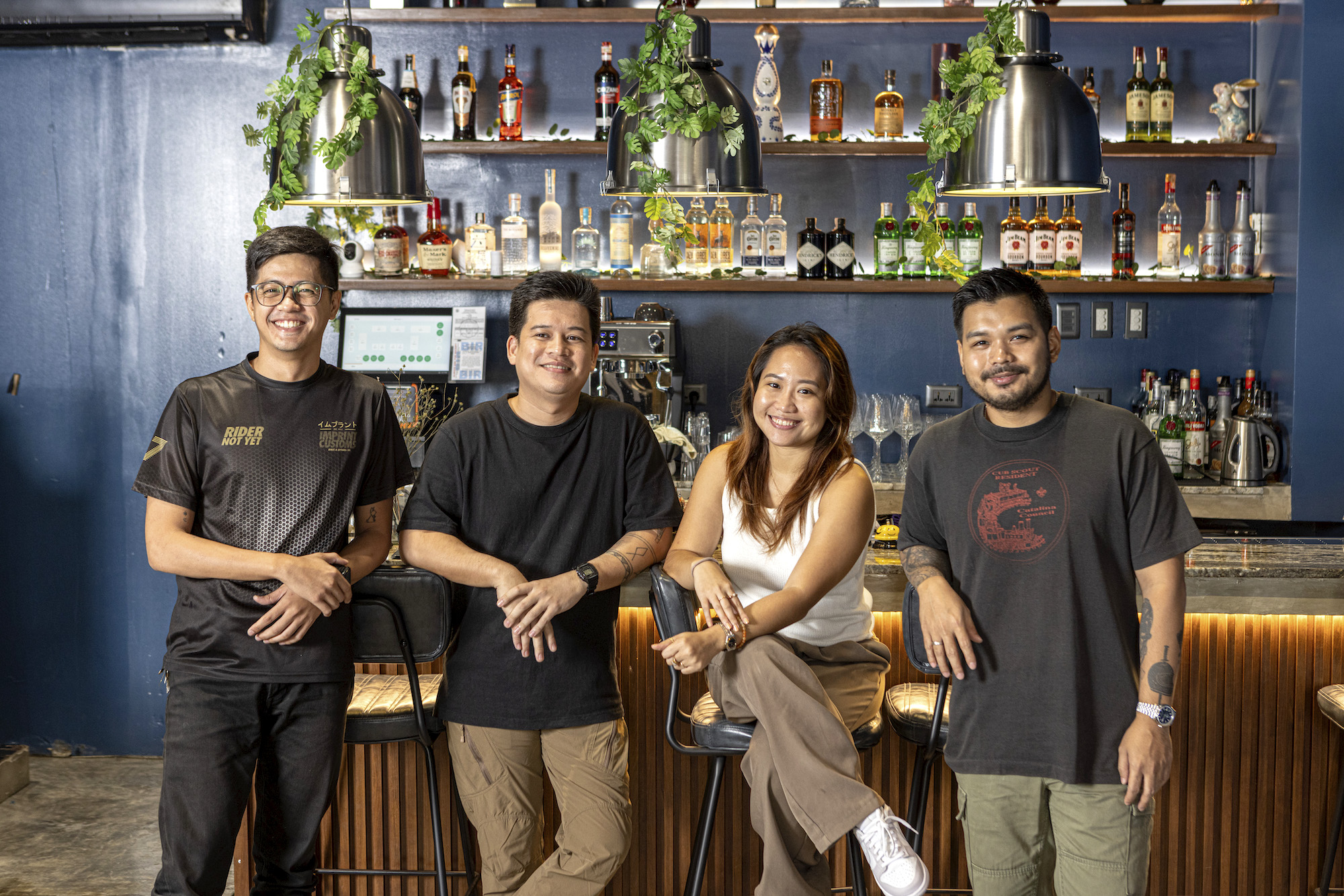If you don’t know what exactly it is you’re looking for, Rabbit Room can be difficult to find. Tucked away between Chinese mini-marts and Korean spas, the restaurant finds itself in an interesting neighborhood: San Antonio, Makati. It’s a few ways away from all the other restaurants of a similar caliber that are usually found in neighborhoods like Salcedo, Legaspi, or Poblacion.
But that’s just how its founders like it.
“Initially, we found a spot that’s kind of hidden—it reminded us of a speakeasy. That’s why we thought ‘Maybe we should call it Rabbit Hole?’ but that name was already taken. So we opted to call it Rabbit Room,” says head of marketing Denise Liao.
Rabbit Room is a restaurant years in the making
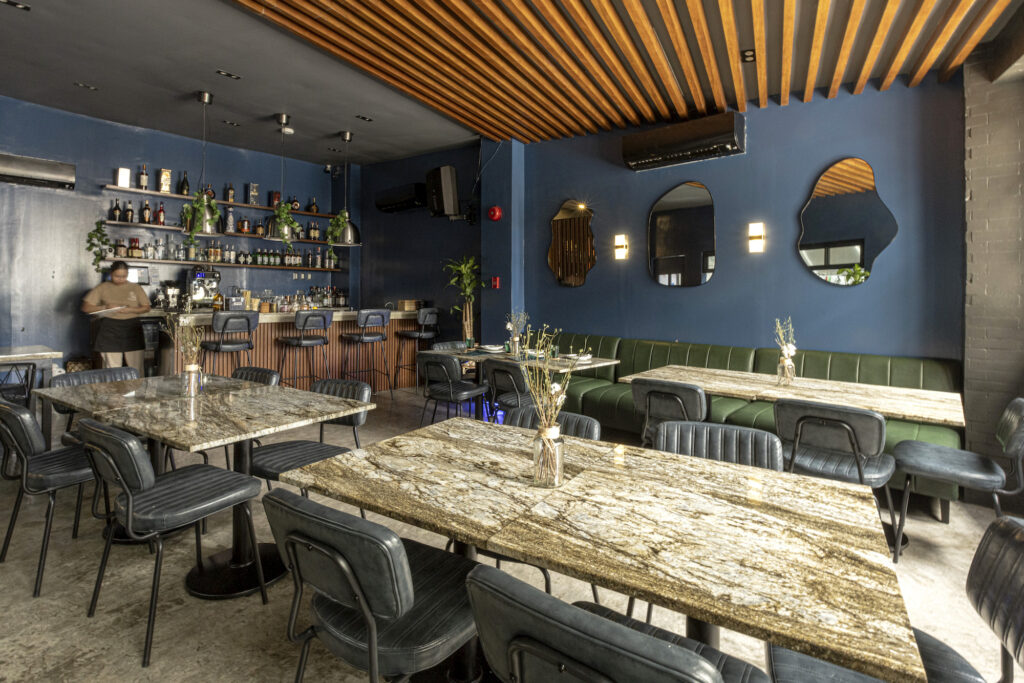
Rabbit Room is a restaurant from a group of friends who have been in the food and beverage industry since their fresh grad days. Though, this is their first venture as a collective. The team running the restaurant is composed of Rommel Gutierrez who handles operations, Denise Liao who handles marketing, and chefs Rafael “Rap” Cristobal and John David Ty.
How the restaurant came to be was a mix of the right timing, underlying desire, and an opportunity that just couldn’t be passed up.
“Actually, the space used to be a cafe and [Ty] used to consult for them. The café didn’t work out, so the landlord contacted him and asked if he wanted to pick up the space,” says Gutierrez. After being offered the space, Gutierrez called up his old buddies and asked them if they were willing to start the Rabbit Room. And thankfully, they did.
Rabbit Room is a restaurant from a group of friends who have been in the food and beverage industry since their fresh grad days. Though, this is their first venture as a collective.
Everyone brings something special to the table. Gutierrez admits that he’s more of an operations man, so he needed people he can trust to handle the marketing and the kitchen. Liao is no stranger to PR and events since her early nightlife promotion days. Inside the kitchen, Cristobal and Ty are a double bill duo who both wear the head chef hat.
Ty was the consultant for the space’s previous cafe iteration. “We just want to clarify, it didn’t close down because of [Ty],” Gutierrez clarifies jokingly.
What Ty brings to the table is his expertise in cooking—specifically, Italian cuisine. Prior to Ty’s consulting gig at the café and his role as co-head chef at Rabbit Room, he worked at the Singapore outpost of the Michelin-starred Osteria Mozza for three years.
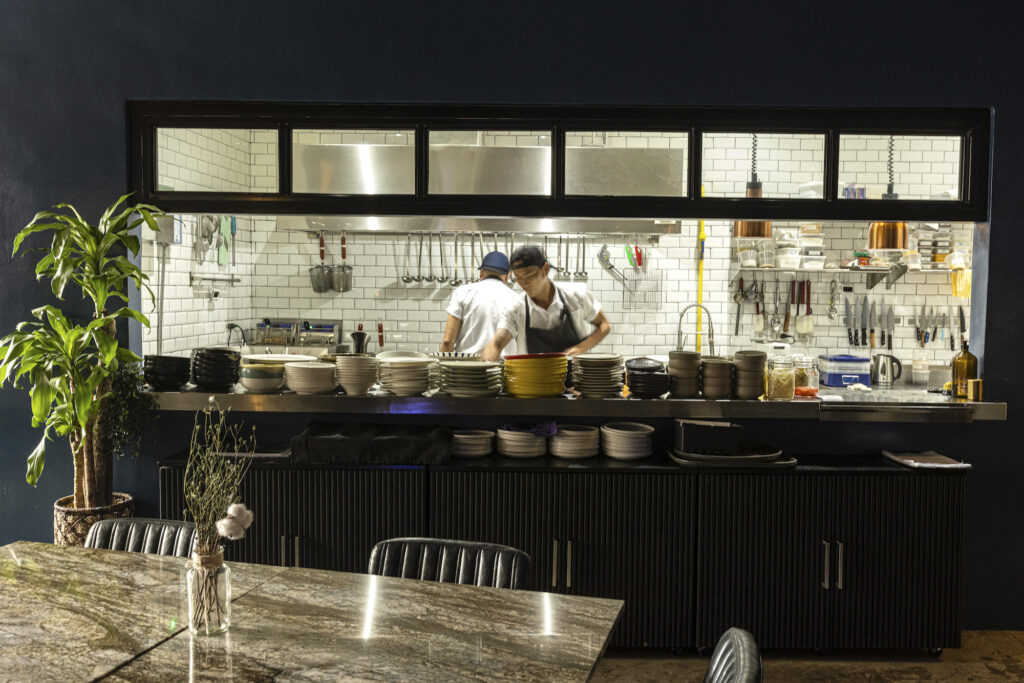

And if the name Rap Cristobal rings a bell, it’s because he is the same person who brought us Crouching Mama—a southern favorite that sadly closed its doors last May, and a restaurant that Gutierrez also invested in. While lessons from that experience are present in Rabbit Room, make no mistake. There’s no Chinese food on the menu.
Rabbit Room is a departure from Cristobal’s days of working over a wok. Instead of slinging baos and stir-frying noodles, the restaurant decidedly serves Filipino cuisine (care of Cristobal), Italian fare (care of Ty), and—most notably—actual rabbit.
“We wanted this concept to focus on [the chefs’] talents, so the first thing we did was ask them how much space they need for the kitchen,” Liao shares.
“They made it smaller, for the record,” refutes Ty in jest.
A risky hop in the right direction
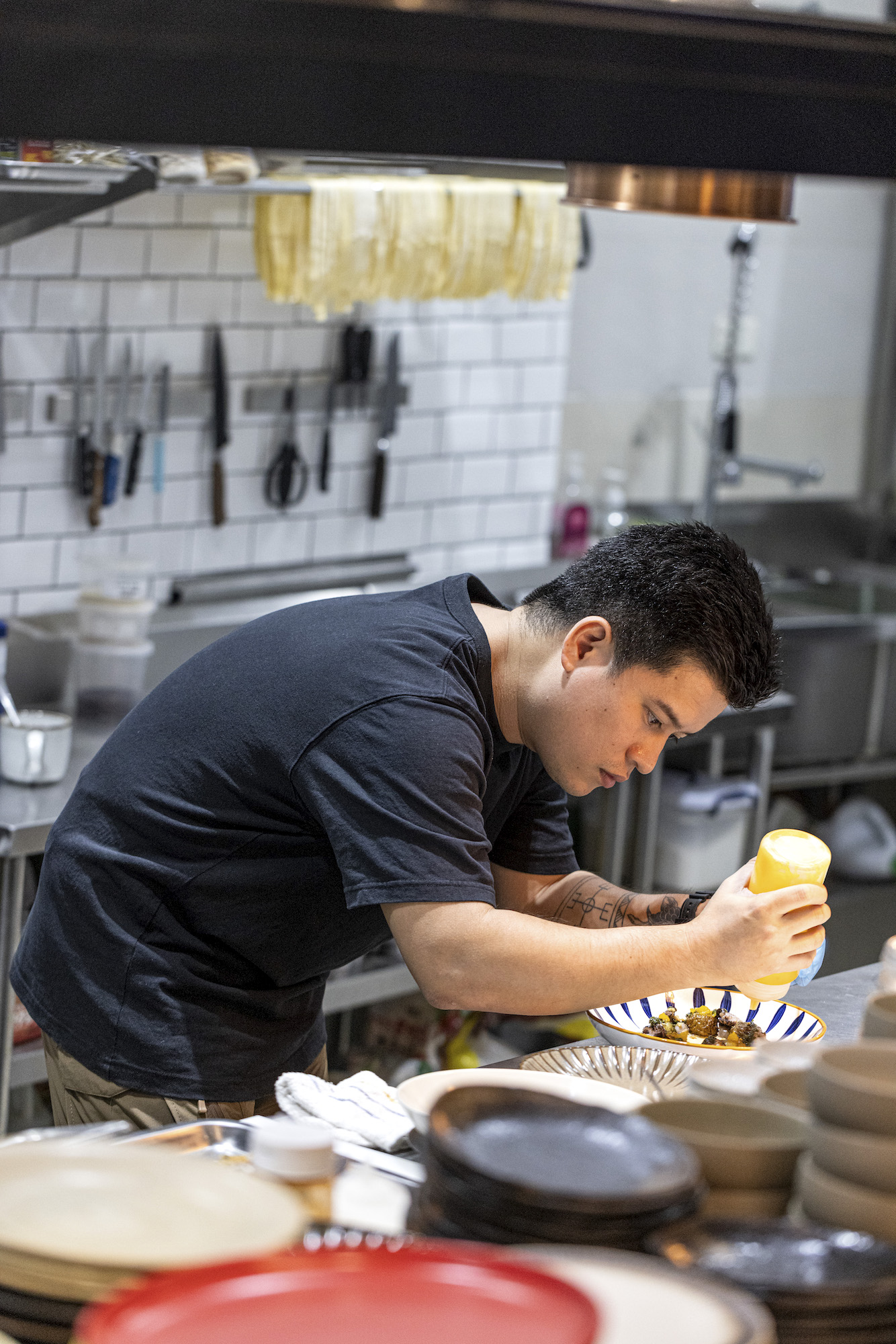
While serving rabbit is not unheard of (with it being the main protein used in traditional Valencian paella), the white meat isn’t a common item in most local menus.
“We added [rabbit] to the menu to make it fun. No one’s been brave enough to use it since it’s a bit of an unusual ingredient, and we ended up making a brand out of it. That’s why we wanted to put it on the menu,” explains Liao.
Their rabbits aren’t the fluffy ones we’ve all had as pets at one point. These bunnies are bred bigger, more muscular, and decidedly less cute according to the team. They source their rabbits from a local farm in Bulacan (run by an ex-sommelier friend of the group) that supplies the restaurant exclusively.
There are three rabbit dishes on the menu: rabbit ragout with brioche rolls, rabbit confit, and rabbit adobo. The methods and executions of the dishes were chosen for a particular purpose, says Cristobal.
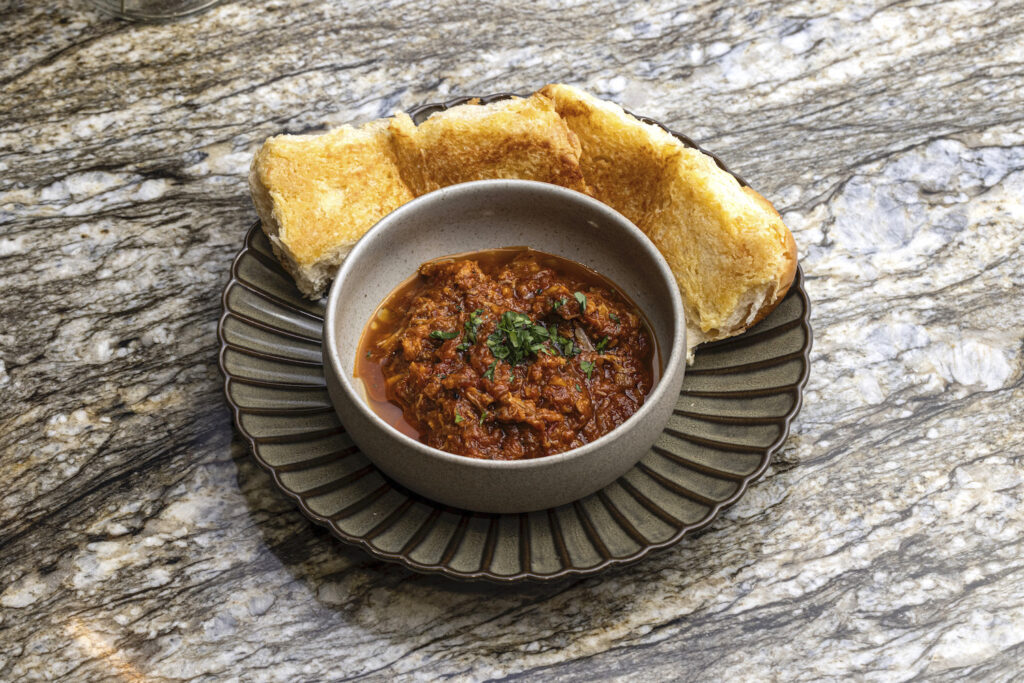
“For the rabbit meat to work, it’s either you cook it very long and slow or very fast. With the confit, you can taste the rabbit itself since it’s very simple.”
The same can be said for the adobo and the ragout. All three dishes are slow cooked to make the best—and the most—out of the otherwise overly lean rabbit meat. At the same time, the dishes are a blend of the novel and familiar, which makes it easier for diners to approach.
“[We use the] bones of the carcass [for the ragout] because we get it whole. The legs are used for the adobo and the confit, while the meat [from the rest of the rabbit] is used for the ragout,” Cristobal continues.
“For the rabbit meat to work, it’s either you cook it very long and slow or very fast. With the confit, you can taste the rabbit itself since it’s very simple,” says Rap Cristobal.
“[The ragout] is easier to eat. You don’t see the rabbit,” adds Ty.
In a surprising turn of events, though, anything rabbit became the bestselling thing on their menu. To the point where people would crave it and order it to enjoy either at work or at home.
“We didn’t expect it to be a hit,” admits Cristobal. “We thought that maybe people would order it once or twice, but we didn’t expect that it would be the thing people would order the most.”
A mix of the new and familiarly unfamiliar

Rabbit aside, there are many other things to enjoy on the restaurant’s menu. A quick browse through their assortment of dishes tells the story of the passion and experiences Cristobal and Ty have picked up and honed through the years.
An interesting delineation presents itself on the pages of their menu. One half being decidedly Filipino (care of Cristobal), and the other a clear nod to Italian and European cuisine (care of Ty).
Dishes like bakoko inaluban (the restaurant’s take on the classic Maranao dish) and humba and mash (a very Bisaya dish made from slow cooked pork belly and beans) sit comfortably beside items like carbonara (made the traditional way, of course), pulpo and potatoes, and tuna crudo.
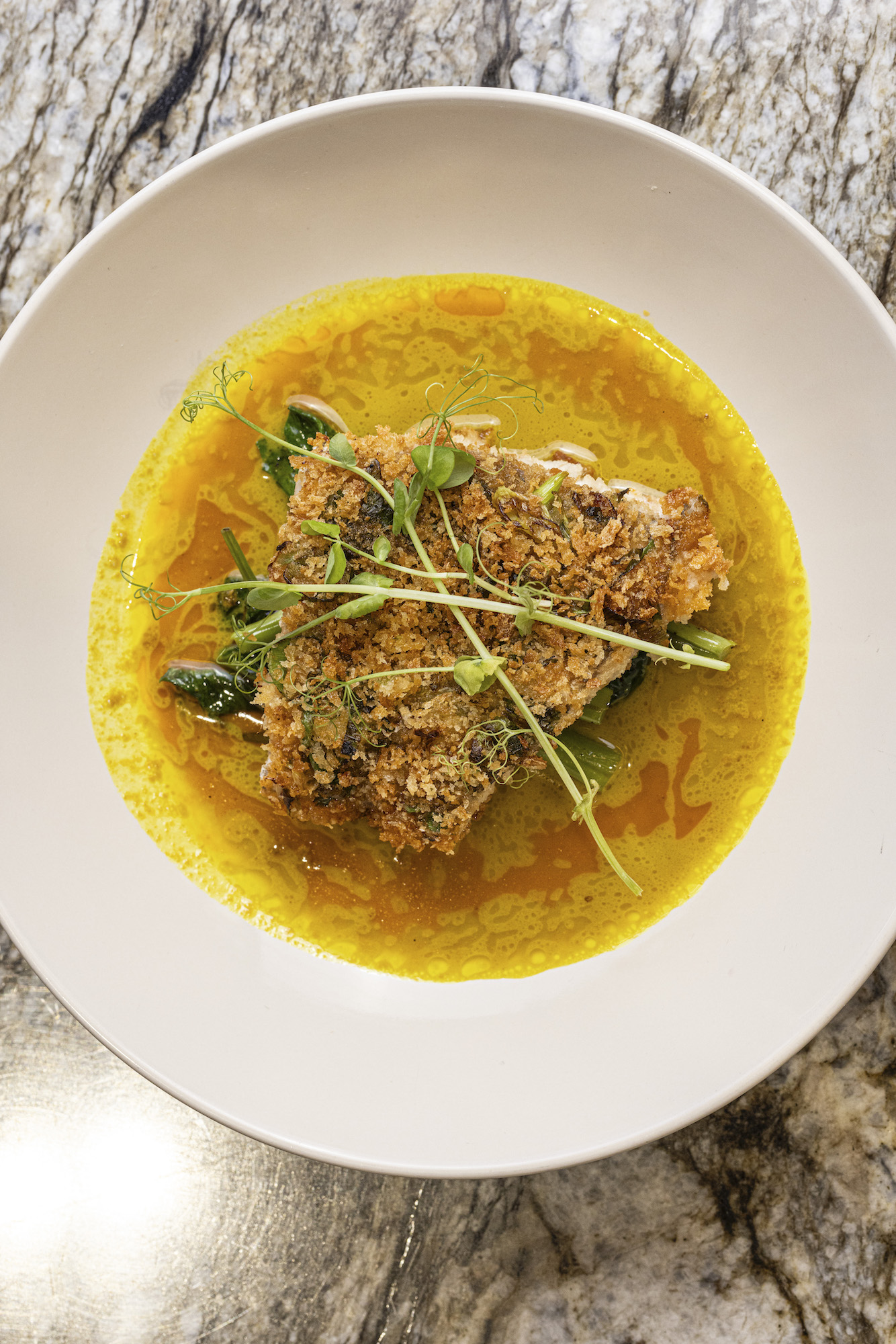
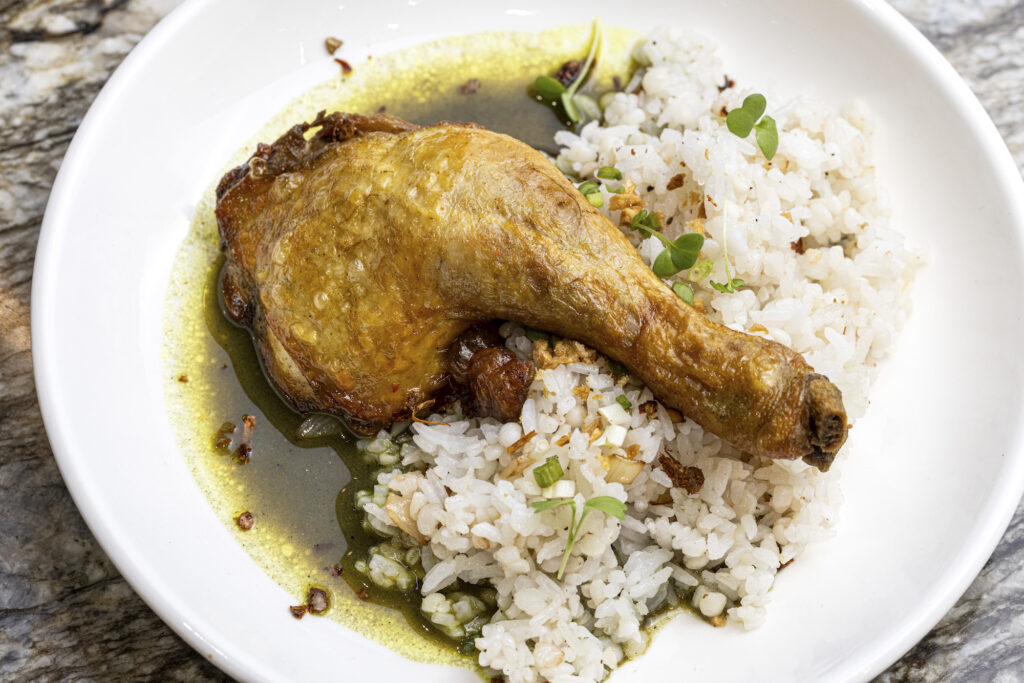
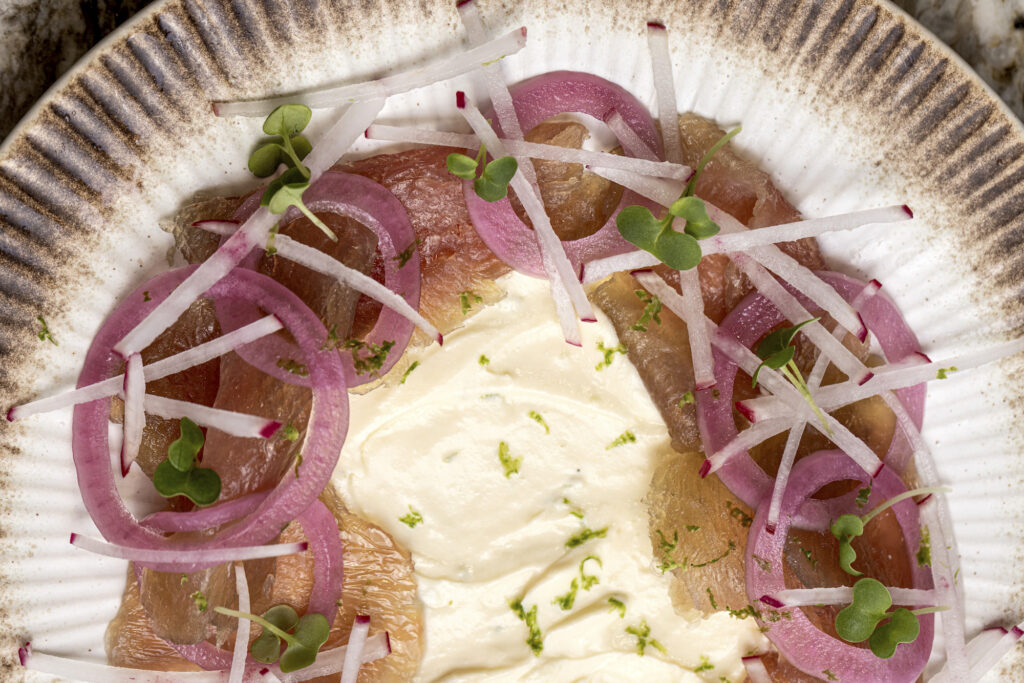
All the pasta dishes are made with fresh pastas, kneaded, sliced, and prepared in-house, thanks to Ty’s tenure at Osteria Mozza. The years of experience and love for the craft is present in each tasty bite of the dish—specifically, the rich and slightly spicy puttanesca.
Though the other half of the menu may be Filipino, these dishes aren’t what Manila diners are accustomed to. Including regional specialties was a priority for Cristobal. There are culinary wonders and gems outside of Luzon, and the dishes chosen are stark reflections of that.

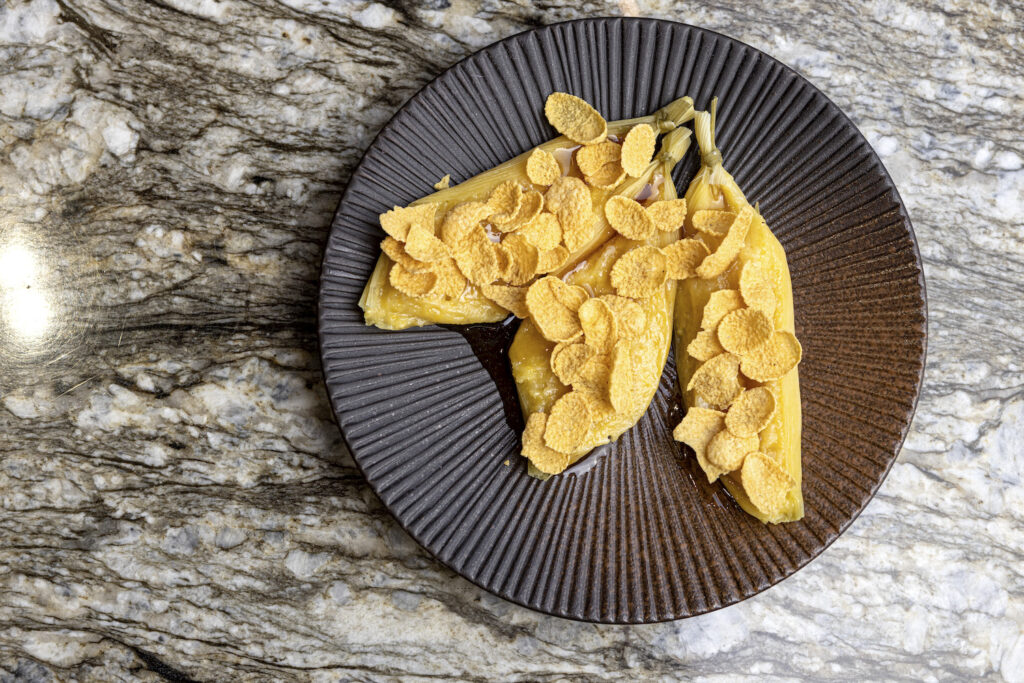
“Most of the Filipino restaurants [here] tend to focus on what’s [in and around] Manila. Like in Luzon, kare-kare and things like that [are staples]. [Our menu includes] binaki and other stuff like that,” Cristobal explains.
For those unfamiliar with binaki, it’s a local delicacy commonly sold in Bukidnon and Bogo, Cebu. It’s a type of tamale made from sweet corn and is usually sold in high-traffic areas like highways and bus stops as a pasalubong or small snack.
When one door closes, the Rabbit Room opens
While this is the first joint venture of the team behind Rabbit Room, all four partners have been in the business for quite some time. Food is ultimately a passion some chase but this can also result in heartbreak and struggles in the form of closures and unaccommodating landlords.
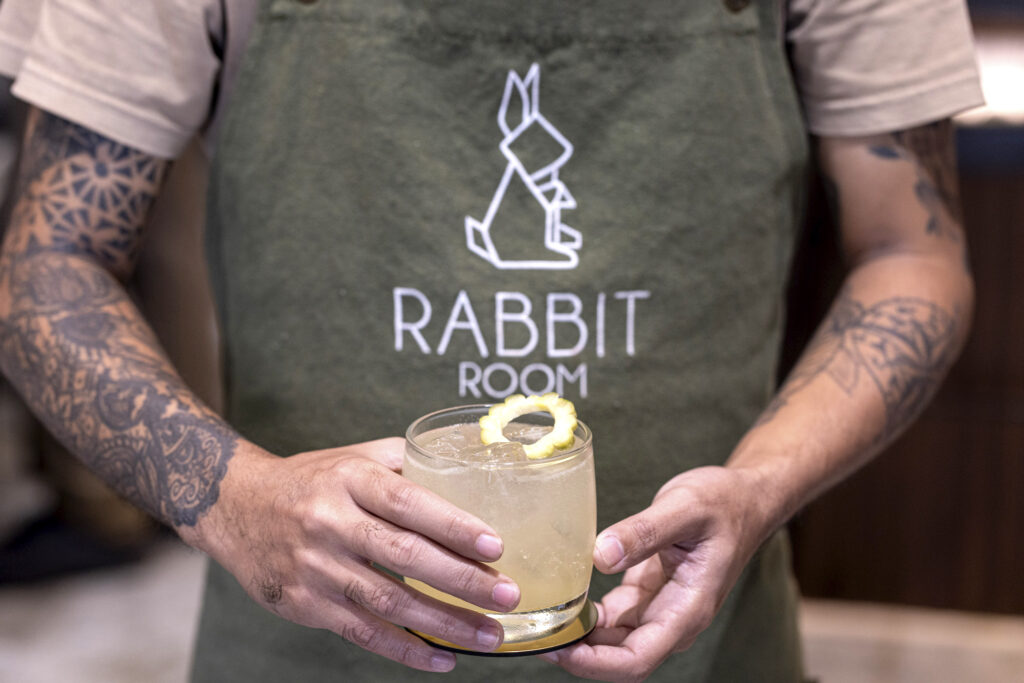
Cristobal and Gutierrez, specifically, have had their own share of restaurant closures to deal with and learn from—with the latter likening the closing of a restaurant to a breakup. “There’s really a moving on phase. [When my first business closed] I was super, super depressed. That’s why I didn’t open anything for a few years. You really need a move on phase when it’s like that. You learn a lot,” he says.
“It’s really sad to close something that you opened on your own and helped grow,” Liao adds. “But at the same time, you’ll realize that you learned a lot from it. And you’ll carry it over to a better venture, hopefully. You’ll know what to do next time.”
“There’s really a moving on phase. [When my first business closed] I was super, super depressed. That’s why I didn’t open anything for a few years. You really need a move on phase when it’s like that. You learn a lot,” Rommel Gutierrez says of restaurant closures.
The team also adds that a winning concept isn’t enough to keep a business running. There are factors outside your control that factor into whether a restaurant reaches new heights or shutters its doors. Specifically, when it comes to landlords.
“In the many businesses that we’ve gone through, one important thing is your landlord. If your landlord [isn’t supportive], there’s nothing you can do. The business will really lose no matter how great your concept is,” Gutierrez reveals.
For this go around, the team has been grateful for their supportive landlord, “Sir Mike.” Aside from giving them the space, he’s also printed their collateral free of charge and even invested in the business.
“Shoutout, Sir Mike!” laughs Gutierrez.
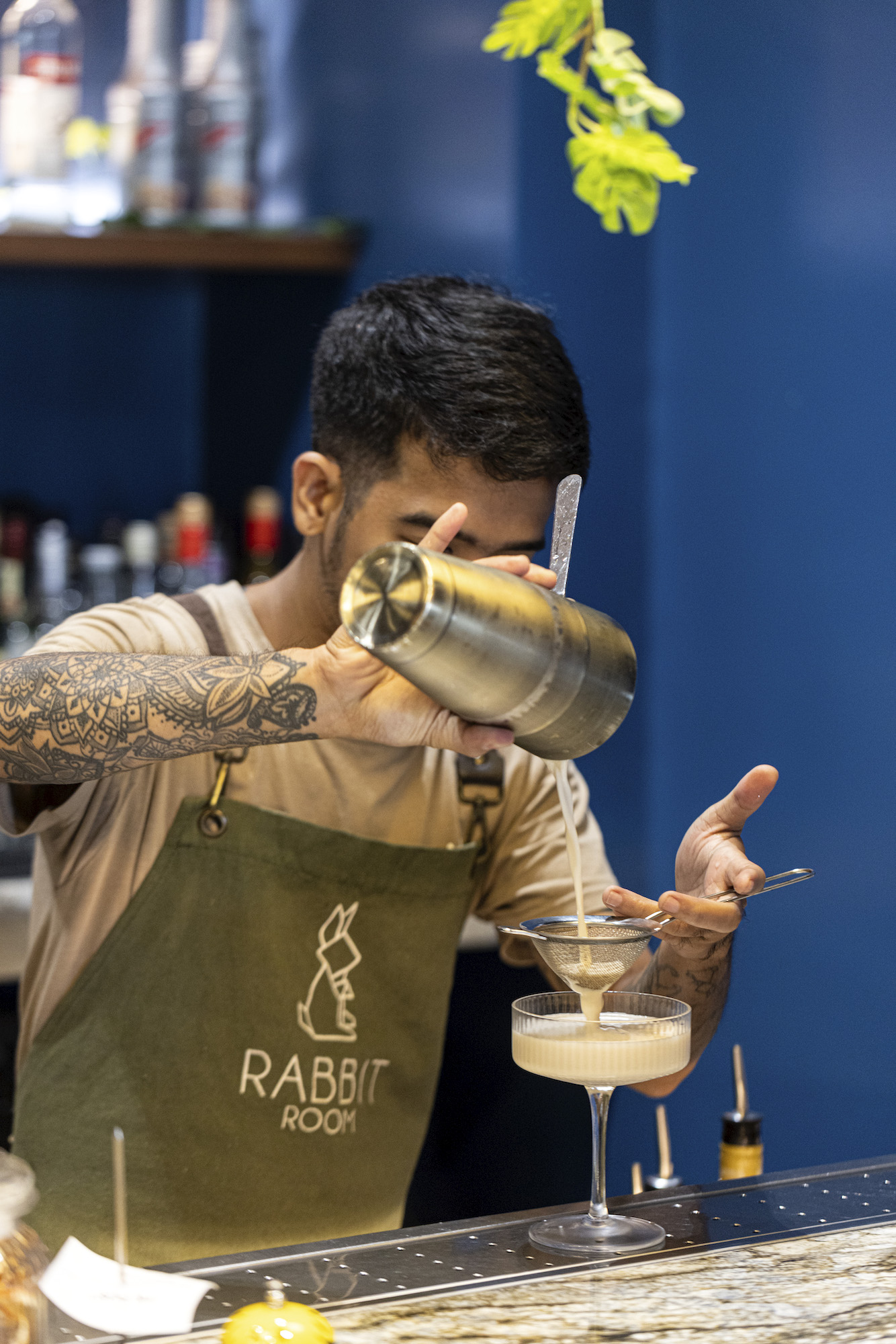
Turns out, all the closures and missed opportunities gave way for the team to form and create the restaurant. But even with all that experience, there are still challenges they face.
“Our space can be a little hard to find. It’s away from the Poblacion area so [diners] really have to go here. So it’s hard to bring in people, but since we’ve been in the industry for so long, we know who to invite and how to do it properly,” explains Liao.
And so far, the gamble on the space and their synergy has paid off in spades. Every member of the team clearly plays to their strengths, which makes for a well-rounded business between seasoned professionals—who also just so happen to be friends.





